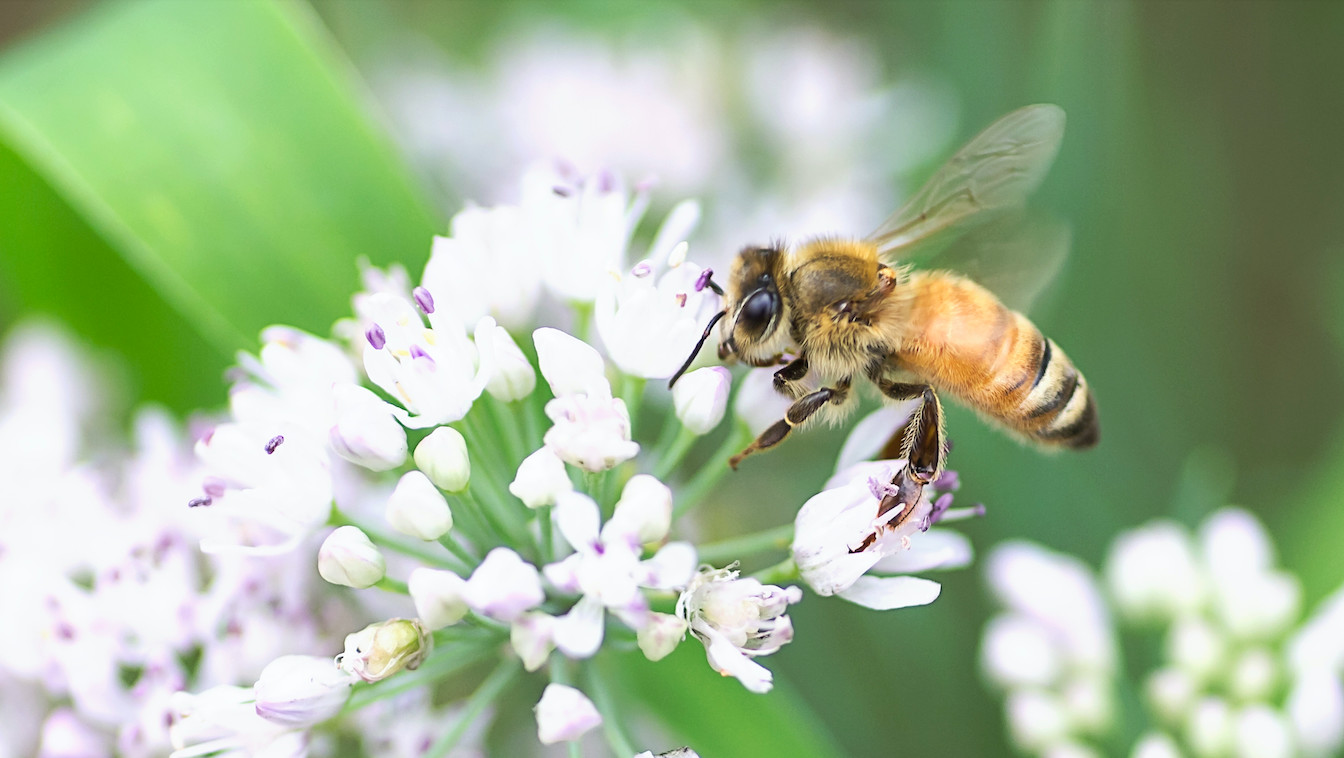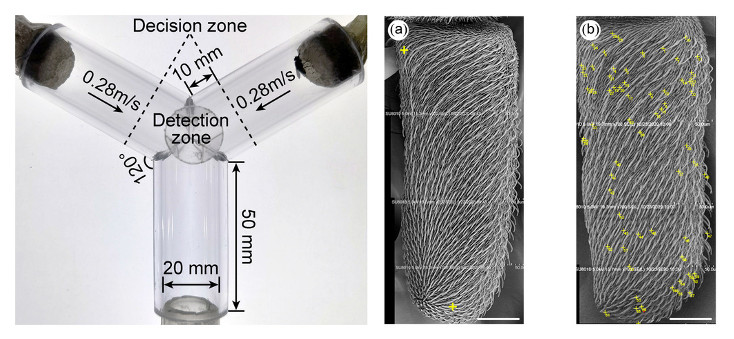
Sciences & Technology
Secrets of the basket-web spider’s silk

The impact of air pollution particles on insects is greater than previously thought and may be a driver of global declines in insect populations
Published 12 July 2023
For most of us, losing mobile phone signal even for a day is enough to generate blind panic. We take for granted the ability to communicate immediately with friends, family and colleagues, as well as to purchase whatever we need using these digital signals.
Communication plays a critical role in the lives of all animals – whether online or not – because the loss of communication impacts their ability to find food and to locate mates, and therefore their ability to reproduce.

Odours form the main source of information and mode of communication for insects, which use receptors on their antennae to detect odour molecules that reveal the location of a potential mate or food, for example.

Sciences & Technology
Secrets of the basket-web spider’s silk
But our new research shows that particulate air pollution – solid particles or liquid droplets suspended in the air – has a greater detrimental impact on insects than previously thought.
The finding, published in Nature Communications, suggests this type of pollution is likely to be an additional driver of global declines in insect populations, even in remote wilderness areas.
Particulate matter (PM) from the combustion of fossil fuels includes toxic heavy metals and organic substances. These are inhalable particles so small they cannot be seen with the naked eye.
Large particles (for example, PM₁₀ which are 10 millionths of a metre, or 10 microns, in width) may irritate your eyes and nose, while much smaller particles (PM₂.₅, which are less than 2.5 microns in width) can travel deep into the lungs. The latter is more harmful to us and can accumulate on the antennae of insects.
Around 40 per cent of Earth’s landmass is exposed to concentrations of PM₂.₅ that exceed the World Health Organization’s recommended annual average.
Surprisingly, this includes many remote and comparatively pristine habitats and areas of ecological significance – because particles of this size can be carried thousands of kilometres by air currents.

With colleagues from the Beijing Forestry University and the University of California Davis, we studied houseflies collected from Haidian District, Beijing during times when the air quality was rated low, moderate, or high using the Air Quality Index (AQI).

Health & Medicine
The impact of air pollution on life expectancy
The field surveys, led by Dr Qike Wang and Genting Liu from the University of Melbourne, also sampled other insects from bushfire-affected areas in Victoria, Australia.
The studies from both urban Beijing and rural Australia found PM₂.₅ accumulated on the antennae of diverse insects, including bees, wasps, moths, and flies.
Using a scanning electron microscope, we observed more PM₂.₅ on the antennae of houseflies (Musca domestica) in Beijing as the concentration of air pollution increased.
Most of the particulate material on the antennae was PM₂.₅ (comprising silicate, sulfurate, fly ash and metal particles, and generally considered more hazardous for human health) than PM₁₀, and much more were found on the surface of the fly’s antennae, than elsewhere on its body.
We wondered whether the accumulation of PM₂.₅ prevents odour molecules from reaching the olfactory (smell) receptors located on the numerous sensilla that cover the surface of the antennae. If so, then the accumulation of these minute particles may make it even more challenging for insects to smell food or a mate.

To demonstrate how much the particulate matter was impacting the flies’ ability to detect odours, we placed houseflies that had been exposed to PM air pollution for 12 hours into the base arm of a Y-shaped tube, like a basic maze.
A scent of food or sex pheromones was introduced into one arm of the Y so we could observe whether they moved towards the odour or not. We similarly tested uncontaminated flies.

Sciences & Technology
It’s not just antenna size, but scales that matter for lonely male moths
Uncontaminated flies typically moved into the arm with the odour source rather than clean air, even at very low concentrations of odour. However, the PM-contaminated flies seemed to be unable to detect the odour source, choosing the arms at random.
Next, we looked at the strength of signals being sent to the brain from the antennae by studying the change in electrical voltage across their antennae triggered by an odour. We found that signal strength was also significantly reduced by PM contamination and lasted for up to 10 days in female flies.
It is remarkable that such a brief exposure to air pollution, much shorter than the lifespan of most insects and shorter than the duration of most pollution episodes in major cities, has such a profound effect. We suspect our experiments are likely to underestimate the true impact on insects.

Together, these results indicate particulate pollution from industry, transport, bushfires and other sources reduces insects’ ability to find food and mates. Insect populations comprising significant numbers of under-nourished, unmated individuals are likely to decline.
In fact, exposure to particulate matter may be more dangerous for insects and ecosystems than gaseous air pollutants like nitrous oxides or ozone.
Insects play crucial roles in our ecosystem through the regulation of pests and diseases, pollination, and nutrient cycling, all of which require effective detection of chemical signals.
Given the diversity and abundance of terrestrial insects are declining across the world, we need more research to inform global pollution regulations.
Banner Video: Envato/ Picture: Getty Images